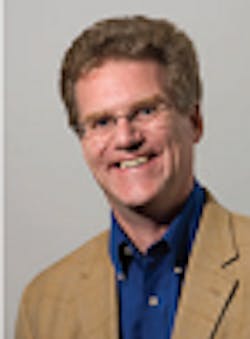The role of the process historian is changing and expanding. Today, beyond its traditional, on-prem instantiation, it’s likely to be part of (or input to) a corporate data lake, and store far more information than just process data from the control system. The first expansion of this incremental data collection is the asset management data associated with the field devices monitoring and controlling the process itself.
One model developed to increase access to this incremental data and integrate it with business systems is the NAMUR Open Architecture (NOA) concept. The underlying premise of NOA is to introduce an open interface between the existing core process control domain and a newly defined monitoring and optimization (M+O) domain, which is based on IT systems and extends up through existing Level 3 maintenance tools that run in parallel to the process control domain.
NOA does a wonderful job of developing the concepts, and as the authors indicate, future reports will provide additional details. However, all models in the NE 175 NOA report indicate a parallel connection to either the sensor itself or from the input/output (I/O) card. We've seen this concept before, as with the introduction of WirelessHART, where one of the use cases installed a parallel wireless network infrastructure with wireless “thumbs” to collect diagnostic information. This approach to gathering asset management information obviated the need to upgrade to I/O cards that supported HART.
Though the parallel system is one option, it circumvents all the constraints built up over the years to prevent changes to the control system that would affect security, safety and reliability—all under the management of change and reliability umbrella. Perhaps, if we could instead simplify the process of adding a new device (the approach being proposed by the FieldComm Group’s PA-DIM information model), we might achieve the same result with less complexity.
With the increased adoption of Ethernet at the field level, bandwidth is no longer the challenge it once was, and perhaps NOA intends for the parallel communications to be a software-defined service like a software defined network (SDN) to the controller, rather than a completely new infrastructure. NOA is really all about getting the additional information available across the organization into an accessible context, where it can be used and useful. The document incorporates several interesting techniques to address cybersecurity, and importantly recognizes this need.
Data collection only the start
Collection of data is only one piece of the puzzle. Mining the data to convert it to information and knowledge is where the true value resides. Unfortunately, many organizations are simply building the lake—like the reservoir behind a dam—with the intent and hope that someday it will be useful. The artificial intelligence (AI) models to come will require historical information, so that part is correct. Of course, someone needs to train the AI models, which means setting the parameters for which pieces of data to use as the basis for the model, and cleaning up or at least flagging the periods when data is to be ignored. The historian will continue to be an important part of any control system, and its data management role is almost certain to expand to diagnostics, such as those demonstrated by fieldbus technology, which uses status verification to ensure only reliable data is used for closed-loop control.
The vast amounts of data now available also illustrate the importance of not only international standards to harmonize how data is shared and used, but also the importance that data science will play in our future.
Setting noble goals is all well and good, but if only step one is completed, the goal is never achieved, the effort becomes a money pit, and discouragement follows. However, this is where we in the automation profession shine. Making magic from masses of data is what we’ve done for years, if only to optimize our processes using the process data in our historians.
About the Author

Ian Verhappen
Ian Verhappen

Leaders relevant to this article:

